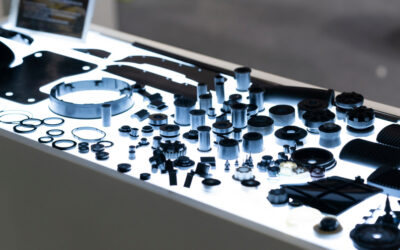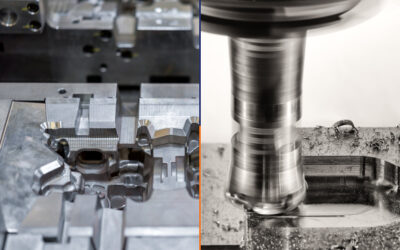When you need to cut parts out of a sheet, you often can’t beat the precision and speed of a laser cutter. But not all laser cutters and engravers are built the same or have the same capabilities.
One of the most popular laser cutting machines is the CO2 laser cutter. Hobbyists can buy or build small CO2 laser cutters capable of engraving wood and leather, cutting paper, and working with certain plastics. However, product designers looking to cut sheets of metal or very thick wood and plastic will need to rely on a higher-powered industrial laser cutter.
This article explores what a CO2 laser cutter is and how CO2 lasers work. Read on to learn what makes these CNC laser cutters stand apart.
What is CO2 Laser Cutting?
Simply put, a CNC laser cutting machine uses high-intensity light to vaporize material from a workpiece with ultrafine precision. The position of the laser head is controlled by the computer to cut shapes out of sheets of material. Laser cutters can also cut slots and bore holes through material with high precision to meet design requirements.
A CO2 laser cutter, also known as a carbon-dioxide laser, is distinct from other types of CNC laser cutting because of the way the laser is generated and directed to the workpiece. It uses electricity and a gas mixture containing carbon dioxide to generate high-intensity infrared light. It then directs and focuses the continuous infrared laser beam using a series of mirrors and lenses.
How Does a CO2 Laser Cutter Work?
Beam generation in a CO2 laser happens inside an airtight glass discharge tube filled with a mixture of gasses, and with mirrors on either end. A large electrical voltage is passed through the sealed tube to excite the gas molecules until they generate light.
While the gas mixture must include nitrogen and helium, the light-emitting molecules in the gas are carbon dioxide. The wavelength of infrared light produced by a carbon dioxide laser transmits relatively easily through the atmosphere, so it can better maintain intensity as the light travels.
The mirrors on either end of the discharge tube include one that is completely reflective and one that is partially reflective. They work together to direct the light generated by the discharge tube into a beam that passes through the partially reflective mirror.
Once the beam exits the glass discharge tube, it is directed using a series of lenses and mirrors to the laser head. The laser head then focuses the laser beam into a narrow, high-intensity beam directed at the workpiece.
Along with beam generation and transmission, the CO2 laser cutter relies on computer numerical control (CNC) to position and control the laser in order to cut out parts with high precision, even for fine features.
CO2 Laser Cutter Benefits & Limitations
Carbon dioxide laser cutting offers several important benefits over other cutting methods:
- Very high precision and a very small kerf width for excellent detail on fine features.
- Good overall efficiency to run, often with lower power consumption than other processing methods.
- Very high production speed for cutting thinner materials, though not as high as with fiber laser.
- No flying cut debris and minimal waste cleanup in the form of dust.
- Better edge quality and cut surface finish than common waterjet or plasma cutting machines.
- Non-contact cutting doesn’t impart impurities into the workpiece (good for medical applications).
Product designers considering using CO2 laser should also be aware of its main limitations in case it impacts their design:
- Cannot cut very thick metals, which are better processed by using waterjet cutting or electrical discharge machining.
- Not suitable for materials that have a highly reflective surface.
- Sensitive to misalignment of the beam, which requires trained experts for readjusting mirrors and focusing elements.
- High heat input from the laser creates a heat-affected zone (HAZ) that can alter the mechanical properties of the workpiece around the cut area.
- While acrylic is fine, laser cutting produces toxic gasses in certain plastics and organic materials, like polyvinyl chloride (PVC).
High Speed, High Precision Laser Cutting with Gensun
Overall, CNC laser cutting offers an excellent solution for cutting small, high-quality parts like medical devices and precision-engineered components. CO2 lasers specifically offer great versatility and high cutting speeds for a range of unique applications.
If you are looking for a production partner that offers cost-effective laser cutting services with high-quality results, check out the Gensun laser cutting services page to learn more about what we offer.





